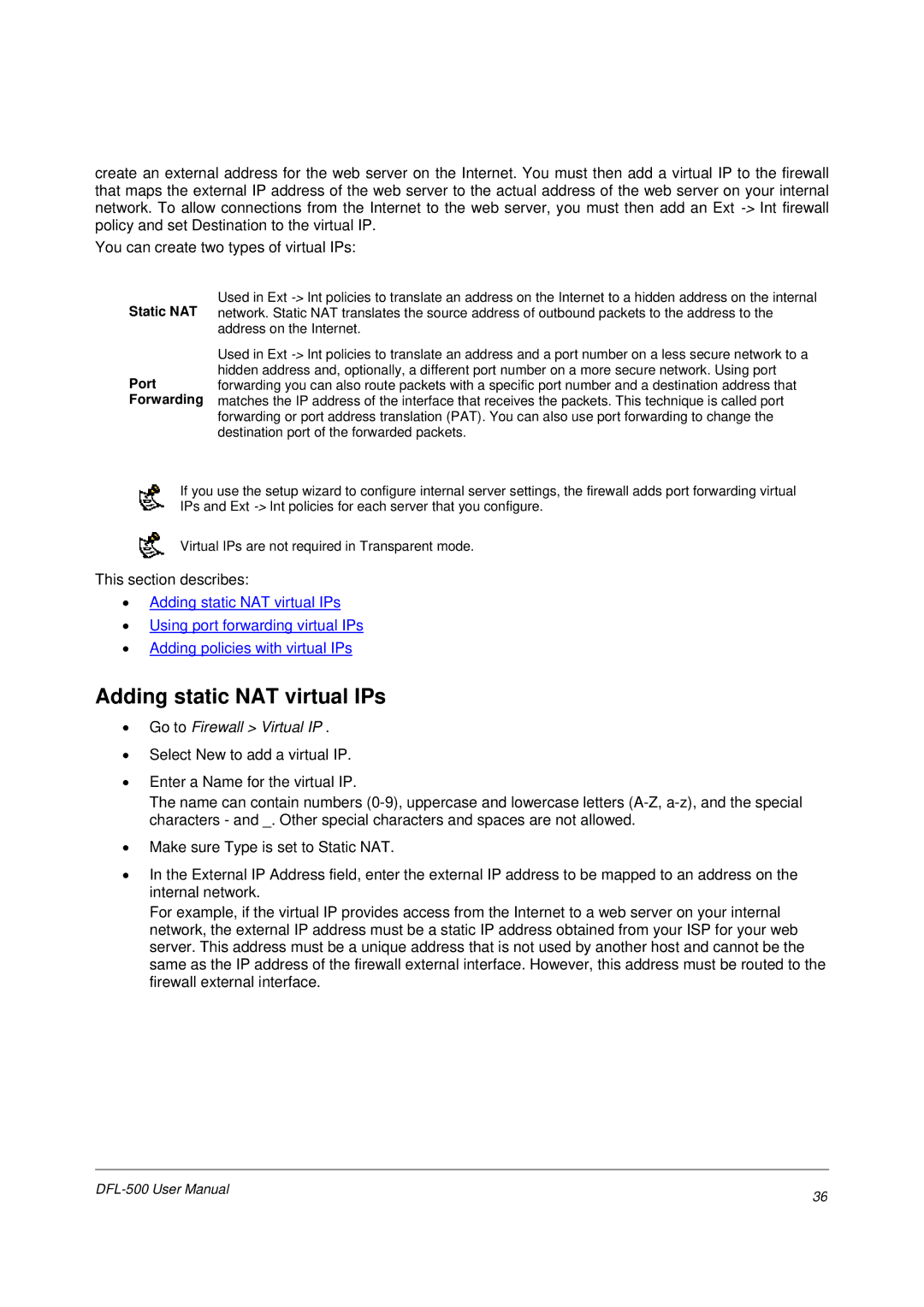
create an external address for the web server on the Internet. You must then add a virtual IP to the firewall that maps the external IP address of the web server to the actual address of the web server on your internal network. To allow connections from the Internet to the web server, you must then add an Ext
You can create two types of virtual IPs:
Static NAT
Port Forwarding
Used in Ext
Used in Ext
If you use the setup wizard to configure internal server settings, the firewall adds port forwarding virtual IPs and Ext
Virtual IPs are not required in Transparent mode.
This section describes:
•Adding static NAT virtual IPs
•Using port forwarding virtual IPs
•Adding policies with virtual IPs
Adding static NAT virtual IPs
•Go to Firewall > Virtual IP .
•Select New to add a virtual IP.
•Enter a Name for the virtual IP.
The name can contain numbers
•Make sure Type is set to Static NAT.
•In the External IP Address field, enter the external IP address to be mapped to an address on the internal network.
For example, if the virtual IP provides access from the Internet to a web server on your internal network, the external IP address must be a static IP address obtained from your ISP for your web server. This address must be a unique address that is not used by another host and cannot be the same as the IP address of the firewall external interface. However, this address must be routed to the firewall external interface.
36 | |
|
